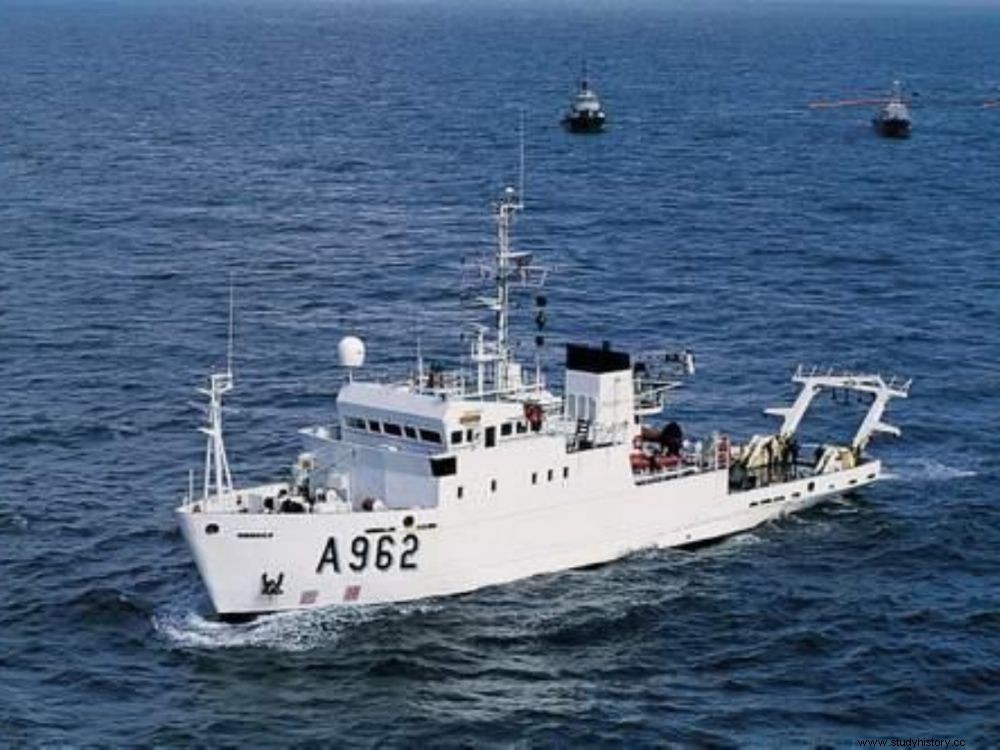The Doggerland is a vast expanse of submerged land which, before sinking under water shortly after 6,500 BC, occupied almost all of the current North Sea. A scientific expedition sets off in search of the men who inhabited this unknown land.

The European research project Lost Frontiers uses the ship of the Royal Belgian Institute of Natural Sciences for its research on the Doggerland
10,000 years ago the face of Europe was very different. The English Channel was a river, and the British Isles were connected to the mainland by a landmass - Doggerland - where large herds of mammals roamed freely. The sea only rises after the end of the last ice age, slowly submerging the land in a slow and inexorable advance. England was finally cut off from Europe at the end of the Mesolithic. Men also frequented this lost continent. And the testimonies of their activities now lie under the sea floor. Inaccessible? Not necessarily. An Anglo-Belgian scientific team, made up of members from the University of Bradford in the United Kingdom, the University of Ghent and the Maritime Institute of Flanders, set out to follow in their footsteps. The expedition embarked on April 10, 2018 for a ten-day campaign aboard the Belgica , the ocean research vessel of the Royal Belgian Institute of Natural Sciences.
"In archaeological terms, Doggerland is largely terra incognita so far"
This research is taking place within the framework of a European project. The "Lost Frontiers project", coordinated by the University of Bradford, maps and studies Doggerland and its Palaeolithic environment. In the past, fishermen's nets regularly brought up archaeological material from the bottom of the North Sea in their nets. Especially on the Brown Ridge sandbar, an elongated sandy ridge off the Dutch coast. This is how human jaws, Neanderthal skulls, polished stone axes and other mammoth bones came to the surface, suggesting a particularly dense human presence in this sector. This presence could have been due to a large lake whose existence is suggested by the river system discovered by a study by the University of Ghent.
It was in this area that the crew of the Belgica will concentrate its efforts. They will first conduct a series of geophysical surveys around Brown Ridge to obtain detailed mapping of the area. Sediment samples will be taken from the most promising areas in archaeological terms, to be examined for signs of human activity. For two years, several marine expeditions will continue this research work. "In archaeological terms, Doggerland is largely terra incognita so far. It would be a major breakthrough in archaeological exploration of the area if we could uncover a prehistoric settlement on the Brown Ridge. The void of the card would finally be filled" , explains in a press release Professor Vincent Gaffney, of the University of Bradford and supervisor of the project.
